Polar Bear Day celebrates one of nature’s most impressive hunters, and the world’s largest carnivore. When fully grown, polar bears can span an enormous 9 feet (2.7m) in height.

Word of the Day
| |||
| Definition: | (adjective) That cannot undergo mixing or blending. | ||
| Synonyms: | unmixable | ||
| Usage: | When two immiscible liquids, such as oil and water, are shaken together, an emulsion is produced. | ||
Idiom of the Day
alarm bell— A sudden warning or intimation of danger, risk, or ill fortune. (Often pluralized.) |

History
| |||
 | Carbon-14 is a radioactive isotope of carbon having a mass number of 14 and a half-life of approximately 5,700 years. It occurs naturally, arising from cosmic rays, and is used as a tracer in studies of metabolism and in radiocarbon dating—a method of determining the age of carbonaceous, once-living material. Carbon-14 was discovered by Martin Kamen and Sam Ruben at the University of California Radiation Laboratory. | ||
| |||
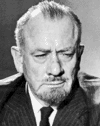 | Steinbeck was an American writer perhaps best remembered for his strong, Pulitzer Prize-winning sociological novel The Grapes of Wrath, which is widely considered one of the great American novels of the 20th century. His later novels include Cannery Row, The Pearl, and East of Eden. He received the Nobel Prize for Literature in 1962. One of Steinbeck's last works was Travels with Charley, a travelogue about a road trip across America. | ||
| |||
| Committing to a partner is scary for all kinds of reasons. But one is that you never really know how the object of your current affections would compare to all the other people you might meet in the future. | |||
1827 - New Orleans held its first Mardi Gras celebration.
1867 - Dr. William G. Bonwill invented the dental mallet.
1883 - Oscar Hammerstein patented the first cigar-rolling machine.
1896 - The "Charlotte Observer" published a picture of an X-ray photograph made by Dr. H.L. Smith. The photograph shows a perfect picture of all the bones of a hand and a bullet that Smith had placed between the third and fourth fingers in the palm.
1922 - The U.S. Supreme Court upheld the 19th Amendment that guaranteed women the right to vote.
1974 - "People" magazine was first issued by Time-Life (later known as Time-Warner)
1997 - Don Cornelius received a star on the Hollywood Walk of Fame.
1998 - Britain's House of Lords agreed to give a monarch's first-born daughter the same claim to the throne as any first-born son. This was the end to 1,000 years of male preference.
DAILY SQU-EEK

If You Were Born Today, February 27
A person who puts others first before yourself, you are compassionate, caring, and giving. Yours is a mysterious charm. You are personable and charming, yet you carry a dreamy quality to you that others find fascinating. Wishful thinking can cloud your judgement at times, but you are a true artist with a vision. Moody, you are easily affected by the moods and emotions of others around you and sometimes have a hard time drawing up boundaries. Alone time will be necessary in order to recharge your emotional batteries. Famous people born today: Henry Wadsworth Longfellow, John Steinbeck, Peter de Vries, Joanne Woodward, Elizabeth Taylor, Ralph Nader, Kate Mara, Timothy Spall.
| Picture of the day | |
 | |
The cylindrical equal-area projection is a family of cylindrical, equal area map projections including the Gall–Peters, Behrmann, Lambert projections, and others. Cylindrical projections stretch distances east-west as a function of latitude; as such, cylindrical equal-area projections have a north-south compression precisely the reciprocal of east-west stretching. The various specializations of this projection differ only in the ratio of the vertical to horizontal axis.
| |

Balancing Act
Photograph by Marco Marcone, National Geographic
Marco Marcone snapped this artfully framed shot of fishermen balancing on small fishing vessels on Inle Lake in Myanmar. “I was in a boat a little bit larger than that of the fishermen in the photo," he writes. "Honestly, they were just there for tourists … Anyway, I tried to do something new. I [hadn’t] seen anyone before [put] the camera and himself inside the fishing net!"

knit

knit
knit
knit

crochet
crochet
crochet
crochet, 2 yrs
crochet

RECIPE
Famous Butter Chicken
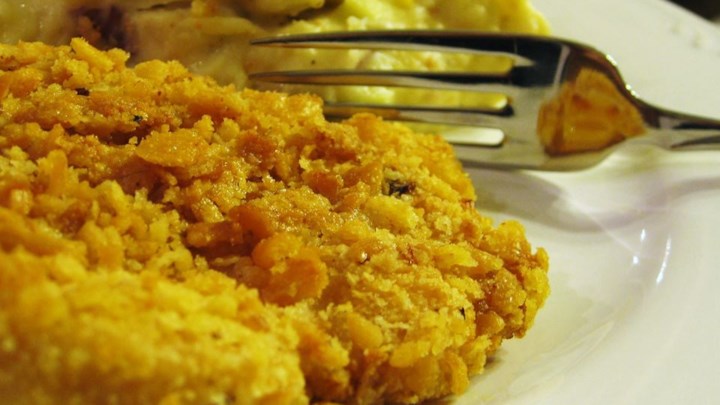

CROCKPOT RECIPE
Beef Stroganoff


CRAFTS

CHILDREN'S CORNER ... craft

PUZZLE

QUOTE
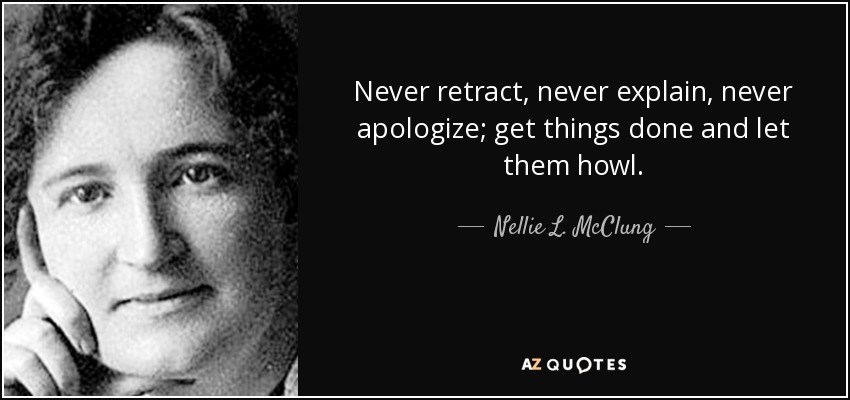



"what is your name?" in Bari (South Sudan) - Karen kunok a ŋa?

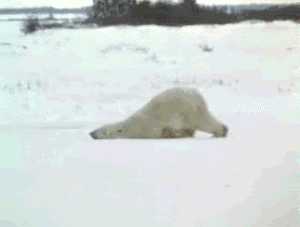
CLEVER


EYE OPENER
thanks, helen
History of Paper Dolls
Copyright 1999 Judy M Johnson
Copyright 1999 Judy M Johnson
opdag
Paper Doll Definition
A paper doll is a two-dimensional figure drawn or printed on paper for which accompanying clothing has also been made. It may be a figure of a person, animal or inanimate object. The term may be extended to include similar items made of materials other than paper, such as plastic, cloth or wood. The term also may include three-dimensional dolls and their costumes that are made exclusively of paper. Collectors sometimes extend their collections to include other toys printed on paper, such as paper airplanes, cars and trains, animals and birds, villages, furniture and so on.

Overview
It's just a flat paper object, but it has such enormous appeal that it will provide a lifetime of pleasure! For historians, paper dolls and their costumes provide a broad look at cultures around the world. Film and theater buffs will enjoy the popular figures from opera, stage, screen and even television that have appeared as paper dolls-and many have. Paper doll royalty and political figures provide opportunities for sleuths who love digging in odd places to unearth their treasures. Those who love babies, children, pretty ladies, animals or fantasy figures will find their favorite subject in paper doll form. And what woman (or man) over thirty does not remember paper dolls as the cheapest, yet most fascinating toy of childhood? It's memories like this that bring many adults back to the subject as collectors seeking the sets they played with as children.
There is nothing quite like the feeling of digging in a box of assorted papers and suddenly finding in one's hand an exact replica of a childhood toy. The years slip away with lightning speed, and such a find awakens childhood with all its simplicities and joys. If the collecting bug for paper dolls has not yet bitten you, it just may. It can be an inexpensive pastime that requires little storage space, or it can grow into a hobby as extensive as collecting antique dolls. And best of all, it is an activity you can share with children of today, teaching them manual dexterity, history, fashion and art while you have great fun together. Once you begin collecting paper dolls, they can become one of life's great passions.
Paper Doll Milestones

First manufactured paper doll: Little Fanny, produced by S&J Fuller, London, in 1810. First American manufactured paper doll: The History and Adventures of Little Henry, published by J. Belcher of Boston in 1812. In the 1820s, boxed paper doll sets were popularly produced in Europe and exported to America for lucky children.
First celebrity paper doll: A doll portraying the renowned ballerina Marie Taglioni, published in the 1830s. In 1840, a boxed set was done of another ballerina, Fanny Elssler, as well as of Queen Victoria.
These early paper dolls are rare and priced accordingly. It is still possible to unearth paper dolls from unexpected places, so it is imperative never to throw away old papers without thoroughly examining them for these treasures.
Early History
Paper dolls have existed as long as there have been paper and creative people to apply images to it. Paper figures have been used in ritual ceremonies in Asian cultures for many centuries. An ancient Japanese purification ceremony dating back to at least A.D. 900 included a paper figure and a folded paper object resembling a kimono which were put to sea in a boat. The Balinese have made shadow puppets of leather and of paper since before Christ, although we are aware of no evidence that they made separate costumes for these figures. Many dolls have been made of paper in the Orient, whether folded or otherwise constructed, but these are three-dimensional and not flat.
In France in the mid-1700s, "pantins" were all the rage in high society and royal courts. This jointed jumping-jack figure, a cross between puppet and paper doll, was made to satirize nobility. (Pantin is the French word for a Dancing-Jack Puppet.) Other cultures have had special forms of paper art, including China (Hua Yang), Japan (Kirigami), Poland (Wycinanki), and Germany and Switzerland (Scherenschnitte). Many more have enjoyed folk art pictorial representations in cut paper, but these also do not have garments to fit the forms.
With the exception of the kimono mentioned above, these paper figures do not fit our definition of paper doll because they do not include costumes for the figures presented. Examples of the first true paper dolls have been found in the fashion centers of Vienna, Berlin, London and Paris from as early as the mid-1700s. These are hand-painted figures and costumes created for the entertainment of wealthy adults. They may have been done by a dressmaker to show current fashions or done as satirical, sociopolitical illustrations of popular figures of the day.
A set of rare hand-painted figures dated late in the 1780s can be found in the Winterthur Museum of Winterthur, Delaware. It shows coiffures and headdresses for sale at the shop of Denis-Antoine on Rue St. Jacques, Paris. In 1791, a London advertisement proclaimed a new invention called the "English Doll." It was a young female figure, eight inches high, with a wardrobe of underclothes, headdresses, corset and six complete outfits. Dolls like these were also sold in Germany. Examples of many beautiful and extremely rare paper dolls can be seen at the John Greene Chandler Memorial Museum in South Lancaster, Massachusetts.
Mass-Produced Paper Dolls Pre-1900
McLoughlin Brothers, founded in 1828, became the largest manufacturer of paper dolls in the United States, making their dolls fairly easy to find today. They printed their paper dolls from wood blocks engraved in the same way as metal plates. Some of the most popular dolls, selling for five and ten cents a set, were Dottie Dimple, Lottie Love and Jenney June. The largest producer of paper dolls and children's books, McLoughlin Brothers was sold to Milton Bradley in 1920.

A smaller publishing company, Peter G. Thompson, published paper dolls in the 1880s. Similar to the McLoughlin style, some of their titles were Pansy Blossom, Jessie Jingle, Lillie Lane, Bessie Bright and Nellie Bly, selling for eight to fifteen cents per set. Also in the 1880s, Dennison Manufacturing Company added crepe paper to their line, starting a trend that lasted for about forty years. Crepe paper added dimension to the costumes of paper dolls and provided countless hours of fun for children at home and in schools. In the 1890s, Frederick A. Stokes and Company published several sets of paper dolls including likenesses of European royalty and America's own Martha Washington.
Imported Paper Dolls
From the 1870s to the 1890s, European manufacturers produced beautifully lithographed full-color paper dolls. They often represented royalty and famous theater personalities, including the German Royal Family, the House of Windsor, and actresses Ellen Terry, Lily Langtry and Lillian Russell.
Beginning in 1866, Raphael Tuck is perhaps the best known manufacturer of antique paper dolls. The company began "by appointment to her Majesty Queen Elizabeth II, Fine Art Publishers, London," and soon opened branch offices in New York and Paris. Their first paper doll was a baby with a nursing bottle, patented in 1893. Tuck's German manufacturing facilities were destroyed by bombing in December 1940 and all records, plates and documents were lost. Tuck dolls are easily identified by the trademark and series name and number on the back of each piece. A trademark style of this company is a set of paper dolls with many costumes and interchangeable heads. Tuck also made "regular" paper dolls. Some of their titles include Sweet Abigail, Winsome Winnie, Bridal Party, My Lady Betty, Prince Charming, the popular Fairy Tale series and many more. Tuck made paper dolls several years into the twentieth century.

Manufactured Paper Dolls Post-1900
Among the companies publishing paper dolls at the turn of the century and beyond was Selchow and Righter, who printed the famous large envelope set-Teddy Bear (out of print) reproduced by B. Shackman/Merrimack and Co. (for over 100 years, in New York City) now of Battle Creek, Michigan. B. Shackman, with excellent color, die-cutting and embossing, is known for its fine-quality reproductions of dozens of antique paper dolls, making them attainable at relatively low prices.
McLoughlin and Raphael Tuck continued manufacturing paper dolls into the twentieth century. McLoughlin kept making paper dolls, along with children's story and playbooks, after its sale to Milton Bradley in 1920. Saalfield Publishing of Akron, Ohio, began making children's books, dictionaries and bibles in 1900. Their first paper dolls, done in 1918, were Dollies to Cut and Paint, combining full-color pages with black-and-white, creating further play for youngsters.
Magazine Paper Dolls
In November 1859, Godey's Lady's Book was the first known magazine to print a paper doll in black and white followed by a page of costumes for children to color. This was the only paper doll Godey's ever published, but it set the trend that many women's magazines followed in years to come.
The 1900s saw an explosion of paper dolls in many lady's and children's magazines. Lettie Lane, painted by Sheila Young, made her entrance in Ladies' Home Journal in October 1908 and ran until July 1915. The pages included Lettie, her friends, her family, their servants and accompanying stories. The Lane family became well-known and loved all across America. Ladies' Home Journal continued printing paper dolls through 1948 by a variety of artists including Lucy Fitch Perkins and Gertrude Kay.
Good Housekeeping gave us Polly Pratt and her family and friends, also painted by Sheila Young, from 1919 to 1921. Grayce Drayton's immensely popular Dolly Dingle appeared in Pictorial Review in March 1913, then again from 1916 to 1933, interrupted in 1926 by Peggy Pryde and friends and in 1925 and 1926 by the flappers Bonnie and Betty Bobbs. After Dolly came the lovely Polly and Peter Perkins series by Gertrude Kay in 1934.
Rose O'Neill coined the word "Kewpish," meaning "cute," and created her dear little cherubs called Kewpies, first as story pages and then as paper dolls. Introduced in Woman's Home Companion in 1912, they enjoyed huge popularity, remaining perhaps the most widely recognized of the antique paper dolls today. Other paper dolls and toys followed in Woman's Home Companion throughout the 1920s: Henry Anson Bart and his paper toys, dolls by fashion illustrator Emma Musselman, Frances Tipton Hunter's precious children, and Katherine Share's paper dolls.
The fashion magazine The Delineator (by Butterick Publishing and pattern company) featured Carolyn Chester's charming series of three-dimensional wraparound dolls in 1912 and 1913. Paper dolls accompanied by toys, theaters and stories remained a regular feature through 1922 with interesting paper dolls and toys to inspire patriotism during World War 1. The women's magazines also had jointed dolls by Carolyn Chester, Catherine Hopkins and Alida Clement.
Good Housekeeping was a major contributor of paper dolls, showcasing the work of many artists from 1909 to the present. Sheila Young's Polly Pratt enjoyed the company of Little Louise, Thomas Lamb's Kiddyland Movies, and "walking" dolls by Elmer and Bertha Hader. Extension magazine, published by the Catholic Church Extension Society, presented a series by Martha Miller of Patsy, her friends and family from 1931 to 1935. They published other paper dolls off and on from 1936 through 1959.
Who doesn't know Betsy McCall, perhaps the best known magazine paper doll in America? She came along after a long tradition of paper dolls in McCall's from 1904 to 1926, featuring the art of Jeremiah Crowley (animals and paper toys); Margaret Peckham, A.Z. Baker and Barbara Hale (Jack and Jill Twins); Mel Cummins (Teeny Town); Corrine Pauli Waterall; Percy Pierce (villages); the Haders (dolls and furniture); Norman Jacobsen (the Nipper series); and Nandor Hanti's clever cut-and-fold McCall Family series.
A sweet-faced Betsy McCall by Kay Morrissey debuted in 1951. Morrissey was followed by an unknown artist in 1955, then by Ginnie Hoffman in 1958. Betsy McCall modeled fashions that could be made with McCall's patterns while she enjoyed travels and activities all over the United States and beyond. Betsy has come and gone over the years from the 1960s to the 1990s with various changes in style, from the 1970s "mod" look to a brief appearance of a new attractive, modern Betsy by Sue Shanahan in the late 1990s.
Paper Dolls in Advertising
When paper dolls surged in popularity as toys, manufacturers of all kinds of household goods took advantage of their popularity by using them to promote their wares. Paper dolls appeared in advertising, some die-cut, some as cards to cut out. A few of the products advertised with paper dolls were Lyon's coffee, Pillsbury flour, Baker's chocolate, Singer sewing machines, Clark's threads, McLaughlin coffee and Hood's Sarsaparilla. These dolls were plentiful and are still fairly easy to find today, often pasted into colorful scrapbooks. Later, from the 1930s to the 1950s, companies put paper dolls into their magazine advertisements to sell such goods as nail polish, underwear, Springmaid fabrics, Quadriga Cloth, Ford Cars, Fels Naphtha and Swan soaps, Carter's clothing for children, and more.
Children's Magazines
Chilldren's magazines were the perfect place to present paper dolls for play and education. Golden Magazine gave us sixty pages of paper dolls by Hilda Miloche, Neva Schultz and L.M. Edens, many of fantasy and of ethnic style. The popular Jack and Jill Magazine is nearly a sure thing for finding paper dolls from 1938 to 1974. Finding those issues is exciting, but sometimes disappointing as frequently the paper doll page has been removed. Artists who created these pages were Betsey Bates (1973); Peggy Geiszel (1940s and 1958); Tina Lee (1938 to 1951); and Irma Wilde. Children's Playmate printed paper dolls from 1929 to 1961 of all kinds of characters including folk characters, siblings, toys and stuffed animals.
Paper Dolls in Teachers' Magazines
Paper dolls appeared in children's activity magazines and teachers' instructional magazines such as The Grade Teacher (1929 to 1951); Junior Instructor and Junior Home Magazine (1919 to 1931); Normal Instructor, Primary Plans and The Instructor (1913 to 1936); and Primary Education and Popular Educator (1924, 1928 to 1929). Auctions of household goods that belonged to retired teachers are gold mines for these kinds of paper dolls.
Doll and Other Contemporary Magazines
Doll magazines, a modern phenomenon, have grown with the popularity of doll collecting and doll-making. Virtually all of the doll and teddy bear periodicals printed in the United States today frequently print paper dolls. Other publications which occasionally print paper dolls are Better Homes and Gardens (various craft issues), Sew Beautiful, Barbie Bazaar and American Girl. Sharp-eyed collectors watch all kinds of periodicals for the odd paper doll which may appear in the context of satire, advertising, illustration, fashion and so on.
Newspaper Paper Dolls
The Boston Herald began printing paper dolls in the 1890s. Two lady fashion dolls –one blonde, one brunette- were issued in the paper, and others could be ordered. Costumes in subsequent issues fit the dolls first shown. The Boston Globe soon followed with their own unusual paper dolls to put together. In 1907 and 1908, a Teddy Bear series was published, and in 1910, a family. After 1900, the Boston Post printed a series about Little Polly and Her Paper Playmates with the popular addition of Polly's older sister Prue, all in full color. The Sunshine Paper Dolls series appeared in The Boston American and The Buffalo Express in 1916.
Paper dolls enjoyed a huge resurgence in newspapers during the Great Depression, when much entertainment could be had for a nickel from the comics and the paper dolls that often appeared in them. Some paper doll characters sprang directly from the comics: the Katzenjammer Kids, Dick Tracy, Brenda Starr, Daisy Mae and Li'l Abner, Fritzy Ritz and Jane Arden. Other newspapers had their own paper doll features, such as Mopsy, Boots and Millie.
Comic Book Paper Dolls
Paper dolls arrived in comic books when comics went beyond the subjects of adventure and heroes to appeal to the female market. Big and little girls then loved comics too, and in the 1940s and 1950s, paper doll pages included with the comics made them even more appealing. Modeling was a popular theme and a career many girls fancied themselves attaining "someday." This theme also offered a great excuse for dolls to wear lots of costumes. Publishers encouraged interest in their comics and increased sales by inviting readers to send in fashion designs.
In hundreds of comics throughout the 1950s, one will find names of mail-in readers/designers assigned to each costume shown. Not all issues contained paper dolls, making the collector's search more challenging. Some of these were Patsy Walker, the Patsy and Hedy series by Atlas Comics (1945 to 1967); Hedy DeVine of Hollywood (Atlas Comics, early 1950s); GAY comics with Millie, Tessie, Nellie and Hedy DeVine (Atlas, 1947 to 1952); the Millie the Model series (Atlas, 1945 to 1973); My Girl Pearl (Atlas, 1955 to 1961); A Date with Judy (National Periodical Publications, 1947 to 1960); Sugar and Spike (D.C. Comics, 1957 to 197 1); Dennis the Menace (Fawcett, 1953 to the present); and the Betty and Veronica series (Archie Comics, 1950 to the mid 1990s).
Bill Woggon's Katy Keene and Contemporary Fashion Model Comics
Katy Keene first appeared in Archie Comics' Suzie (1945 to 1954), Laugh (1946 to the 1990s), Pep (1940 to the 1990s) and Wilbur (1944 to 1946). Katy Keene, originated by Bill Woggon, is the best-loved and most well-known comic book paper doll. She appeared in her own comics -- Katy Keene Charm, KK Annual, KK Glamour, KK Fashions, and others (1949 to 1961).
Katy, her Sis and her friends enjoyed a revival from 1983 to 1990 with some reprints of old Archie Comics by Bill Woggon and new issues by artists Dan DeCarlo, Don Sherwood and John Lucas. A charming series by Renegade Comics, featuring the art of Bill Woggon with the aid of his protégé, Barb Rausch, was Vicki Valentine (1985 to 1986). With only four issues of fun, finding Vicki is a real treat for paper doll collectors. Katy enjoyed some new books in the 1990s by Barb Rausch with the support of Bill Woggon, for Hobby House Press. Since the late 1980s, paper doll collectors have been waiting for new comic book paper dolls, and wishing especially for Katy Keene's return. With enough letters to Archie Comics, maybe it can happen…but who will draw them now with Dan DeCarlo, Barb Rausch and Bill Woggon gone?
More Comic Book Paper Dolls
There were several short-run comic series with paper dolls. Misty (Star Comics, 1985 to 1986) was a four-issue series of comics featuring paper dolls and the art of Trina Robbins. Following in 1987 was another four-issue Renegade Press series -- Trina Robbins' California Girls. Paper dolls appeared now and then in odd places like Eclipse Comics' Airboy, Fashion in Action and Portia Printz (late 1980s), Renegade's Neil the Horse (1980 to 1986), and Marvel Age #54 (1987), the "Official Marvel News Magazine."
The Golden Age of Paper Dolls
The 1930s through the 1950s can perhaps claim the title "Golden Age of Paper Dolls," as their popularity during those years has never been equaled. During the Great Depression, paper toys could be afforded by all. Despite the product shortages of World War 11, paper dolls were still manufactured, though on lesser-quality papers. Parents of the 1950s revered the image of little girls lovingly playing with paper dolls, just as their mothers and grandmothers had before them.
Queen Holden
We cannot discuss paper dolls of this era without introducing artist Queen Holden, who began her career with Whitman Publishing. She painted dear babies, winsome children, families and even movie stars from 1929 to 1950. Some of her best-loved paper dolls today are Baby Patsy, Judy Garland, Baby Shower, Hair-do Dolls, Carolyn Lee, Snow White and the Dionne Quints. She created more of her sweet-faced children for Samuel Lowe Publishing from 1962 to 1971. Some believe that the Barbie doll was inspired by Queen's glamour dolls of the early 1940s. Queen Holden was and is dearly loved by her fans for her unforgettable paper dolls. When old copies of her work can be discovered, it is a joyful find. Today, B. Shackman is the authorized publisher of all her works, reprinting as many of her designs as they can find and keeping her collectors very happy indeed.

Kathy Lawrence
Queen Holden's daughter, Kathy Lawrence, often the model for her mother's lovely paper dolls, is a fine artist in her own right today, perhaps surpassing her mother's work in quality (but not in popularity, as the heyday of paper dolls had passed by the time she became a paper doll artist). Kathy's first published paper doll, done for Whitman, was Tiny Tot Shop, 1969, similar to her mother's Tots Toggery of the 1940s, followed by her darling Beth Ann, 1970. We can find Kathy's exquisite work today in the American Greetings card racks, showing her winsome children, adorable babes and cute animals. Kathy created paper dolls and other products for B. Shackman from 1980 to 1985, so the tradition goes on.
Saalfield Publishing Company
The 1940s and 1950s saw great popularity of manufactured paper dolls by many fine artists. The Saalfield Publishing Company had Maybell Mercer, Betty Bell, Ann Kovach and Jean Morse in the 1930s and 1940s, Mary Knight in the 1950s, and Irene Geiger in the 1970s. Fern Bisel Peat created many charming books from 1931 to 1937. Ruth Newton's animals in Costumes are memorable. Rose O'Neill's dear Scootles and Kewpie made a delightful book in 1936. George and Nan Pollard painted celebrity dolls in the 1950s and 1960s for Saalfield as well as for Samuel Lowe. Their lifelike art extended to other subjects as well. Louise Rumely is remembered for her precious baby paper dolls in the early 1960s, as well for her cherub-filled Swan Soap ads of the 1940s and 1950s. Ethel Hays Simms is known for her Raggedy Ann and Andy series from the 1940s to the 1960s. Other artists can be studied in Mary Young's Paper Dolls and Their Artists, books I and II.
Samuel Lowe Publishing Company
A few of the popular artists of the Samuel Lowe Company are Merily Sharpe, who has been compared to Queen Holden in style; Pelagie Doane, who was also admired as a children's book illustrator; and the Henderson sisters, Doris and Marion, who did large groups of children in play settings. Fern Bisel Peat also painted several books for this company in the 1940s, as did Queen Holden in the 1960s. Jeanne Voelz did celebrity dolls for Lowe and for Saalfield, as well as the irresistible Cuddles and Rags and other cute characters.
Whitman Publishing Companies
Besides the famed Queen Holden, in the 1940s and 1950s Whitman also published the works of Hilda Miloche, whose style is immediately recognized by collectors. (Some of her paper dolls appeared in paper doll story books of the popular Little Golden Books). Avis Mac (1930s) and Judy Stang (early 1970s) did sweet children dolls. Ruth Newton also did her cute animals for Whitman, and Neva Shultz was prolific in the 1960s, doing twenty-eight books. See Mary Young's books for more information on the Whitman artists.

Merrill Publishing Company
Miriam Pendleton Kimbal created books filled with children, as well as the highly-sought-after Gone With the Wind (1940), which can sell for more than $400 today. Merrill enjoyed the popularity of Louise Rumely's sweet babes, including her Angel Babies. Florence Salter's animals are often confused with Ruth Newton's, as both artists dressed puppies and kittens in paper-doll style. E.A. Voss, noted for her children's book illustrations, did a few paper dolls for Merrill, as did the popular magazine illustrator Maud Tousy Fangel.

Western Publishing, Racine, Wisconsin
Thanks to Western Publishing of Racine, Wisconsin, many of Disney's characters became paper dolls. In addition, Doris Lane Butler did young lady dolls (1940s), and Rachel Taft Dixon was loved for her storybook, historical, and folk dolls (1930s). Ethel Bonney Taylor gave us Blondie (1941) as a paper doll. During the 1990s Western Publishing brought us our favorite Disney characters as paper dolls, including Snow White, Pocahontas, The Little Mermaid, Beauty and the Beast and others. These books are still fairly easy to find on eBay and via secondary market sellers.
Celebrity Paper Dolls
Celebrities and movie stars were very popular with all the major publishers. It was much simpler to portray stars in the 1930s, 1940s and 1950s, when rights were generally not secured. Studios often "owned" movie stars and their images, and the stars themselves never saw any income from their sale as paper dolls. With images of beloved stars and sports heroes protected today by lawyers and watchdogs all over the world, a publisher must pay for the rights to reproduce our favorite stars as paper dolls. We are fortunate that the images of royalty and politicians are generally free from these restrictions, so some popular contemporary figures can more readily find their way into paper doll art.
Movie Star Paper Dolls
Ladies World brought us movie stars in paper doll form from 1916 to 1918, including Mary Pickford, Billie Burke, Mary Miles Minter and Charlie Chaplin. The Delineator also used movie stars in a paper-doll guessing game in 1917. Photoplay presented Movy-Dolls in 1919 and 1920. All were ingénues of the silent screen, including the ever-charming Mary Pickford, Norma Talmadge, Charlie Chaplin and Douglas Fairbanks. In 1925, Woman's Home Companion did a short series of child stars as paper dolls -- Jackie Coogan, Baby Peggy, and Peter Pan and Our Gang, painted by Frances Tipton Hunter. In 1925, they ran Hollywood Dollies, doing sixty-six different celebrities including Rudolph Valentino, Tom Mix, Colleen Moore, Mary Astor and Rin Tin Tin.

Barbie
Barbie may be credited or condemned for the decline in popularity of paper dolls in the 1960s, yet in the 1990s Barbie was one of the most popular paper dolls among children and collectors alike. Paper-doll versions of Barbie and her sister, Skipper, were strong sellers in the 1970s to supplement their three-dimensional counterparts. Boyfriend Ken and girlfriend Midge were also made as paper dolls. Paper Barbies appeared in books and in boxed sets from 1962 through the 1990s, and have dwindled to nearly nothing in the first years of the 21st Century. Little to nothing is known of the various Barbie artists until the late 1980s, when nationally known artist Tom Tierney began painting her for Western Publishing. As Tom maintains a wide network of correspondence with his fans and readers of collector publications, most were aware of his new works wherever they appeared. Another Barbie artistto appear in the 1990s was Barb Rausch, whose love of paper doll art started with Bill Woggon's famous Katy Keene, first done for Archie Comics.

Other Places to Find Paper Dolls
Collectors today enjoy many and varied sources of paper dolls. One may network with other collectors via paper doll newsletters and learn about the latest paper dolls published, sources for buying from eBay and other online auctions, catalogues, and directly from artists, and at local and regional parties and conventions. Speaking of conventions, they're the greatest place in the world to find paper dolls. First-time attendees have been heard to gush, "It's paper doll heaven in there!" upon exiting the sales floor.
Greeting card companies sometimes publish cards with paper dolls. Keep a keen eye on all the publishers' racks and review them frequently each season, and you may find paper dolls and toys on cards and even wrapping paper. "Paper dolls" may be wood, cloth, plastic or even magnetic. Fabric stores now sell “paper” dolls on yard goods. Specialty shops and catalogues carry some surprising selections.
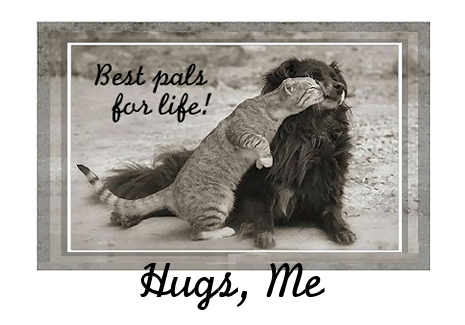



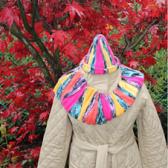




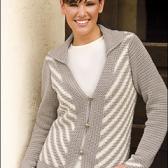
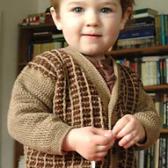

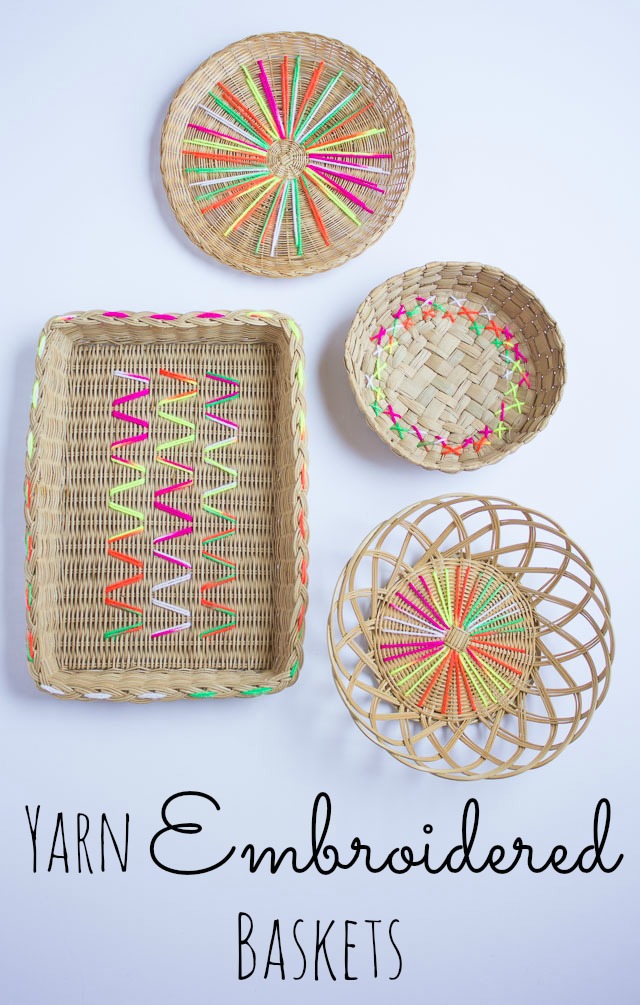


Love the polar bears, and the fish net photo is a great one!
ReplyDeleteThe polar bear cubs are too cute!
ReplyDeleteThe history of why this stuffed toy is called a teddy bear or promotional teddy bear dates back to the time when Theodore Roosevelt was president of the United States Of America. He was out on a hunting trip with his friends but alas he was the only one who hasn't shot anything yet, so some of his attendants captured, clubbed and tied a bear to a tree for teddy to shoot. bear names
ReplyDelete